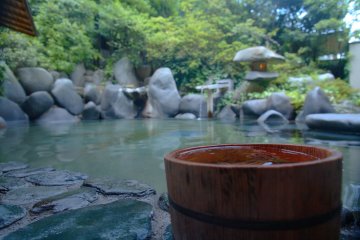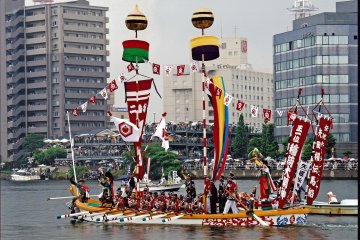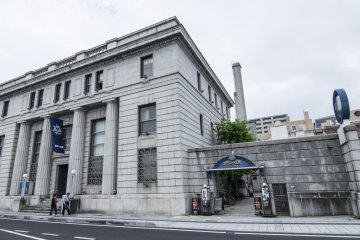Predominantly popular with ladies from their teens to early thirties, accessorizing with handicraft jewellery and trinklets has been a fashion trend in Japan for a long time. More recently however, making your own handicraft accessories has started to get more trendy and mainstream. As a result, handicraft shops in Japan are well-frequented, popular establishments, and some can even be large, multipurpose buildings combining multiple artisan studios with food and beverage outlets.
Built on the old premises of the Bank of Japan branch in Matsue, Karakoro Art Studio is one such giant handicraft complex. Karakoro Art Studio is easily recognizable from its "neo-baroque" architecture style, as is common for government and financial buildings in Japan built during the Meiji Restoration. Restored and updated with large navy-blue banners of Karakoro Art Studio, the building stands out prominently amidst a backdrop of classic Japanese architecture and the nearby Matsue Castle.
Karakoro Art Studio features multiple handicraft workshops and retail stores selling all sorts of artisanal handicraft goods. Some of these retail outlets themselves have classrooms where you can experience making the accessories. The kinds of handicraft found here range from traditional japanese arts such as temari (traditional Japanese handball) and the magatama (beads shaped like commas that are symbolic of the nearby Tamatsukuri Onsen) to modern arts such as necklaces and knitting.
Workshop classrooms are available on the 3rd floor of the main building for a range of handicraft, but most popular are those for magatama and wagashi-making. In particular, the latter is a famous product of Matsue, and lessons are conducted by master craftsmen from the local wagashi scene. The wagashi-making lessons are available daily with the exception of Wednesday. There are two sessions a day, at 11:00am and 2:00pm. Reservations are required so that they may prepare the necessary ingredients.
Behind the main building, a large courtyard with a shady canopy is the perfect place to hang out. The courtyard is surrounded by yet more handicraft workshops and cafes. Karakoro Art Studio is home to two cafes, a bakery and two restaurants, including a soba restaurant that was very packed when I visited. Also worth noting is the basement of Karakoro Art Studio, where the vault doors of the Bank of Japan have been retained and restored as a mini-museum detailing the past incarnation of the building. The vaults themselves are used for special occasions as well, so do not forget to head down to take a peek.

























